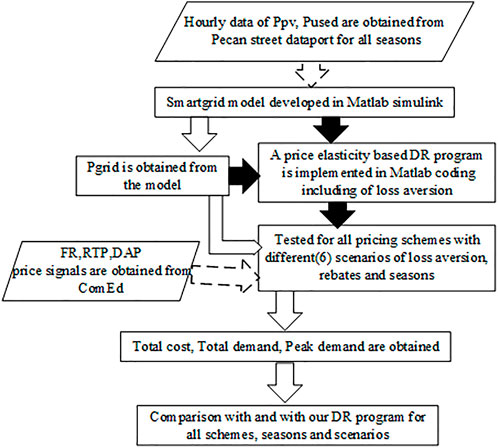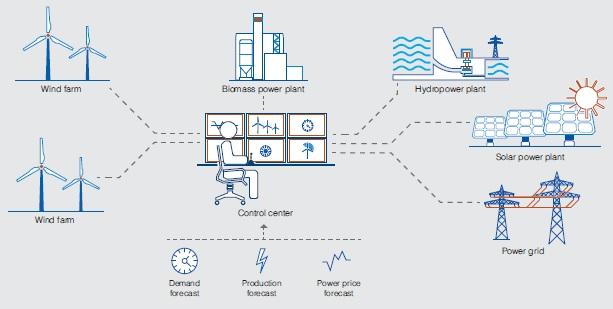Global Renewable Energy Generation in 2024: A Report on Progress Towards Sustainable Development Goals
Global Overview: Advancing SDG 7 and SDG 13
The 2025 Statistical Review of World Energy, published by the Energy Institute (EI), indicates substantial progress in global renewable energy generation, directly supporting the achievement of Sustainable Development Goal 7 (Affordable and Clean Energy) and SDG 13 (Climate Action). The data reveals a significant global shift towards cleaner energy sources, crucial for sustainable infrastructure and combating climate change.
- Total World Renewable Energy Generation: 9,868.1 terawatt-hours (TH), a 9.3% increase year-on-year.
- Contribution by Development Status:
- Non-OECD Countries: 5,937.8 TH
- OECD Countries: 3,930.3 TH
- Global Growth by Source:
- Solar Energy: +27.6%
- Wind Energy: +7.8%
- Hydro Energy: +4.2%
- Other Renewables: +2.4%
Leading Nations in the Renewable Energy Transition
The report identifies key nations leading the charge in renewable energy generation, whose efforts are pivotal for the global energy transition and meeting the targets of SDG 7. The ranking highlights a concentration of renewable capacity in several major economies.
- China: 3,398.8 TH
- United States: 1,068.7 TH
- Brazil: 651.3 TH
Detailed Analysis of Top Performers and SDG Alignment
The performance of the top three countries demonstrates varied strategies and growth trajectories in expanding renewable infrastructure, a core component of SDG 9 (Industry, Innovation, and Infrastructure).
1. China
China continues to be the world’s largest generator of renewable energy, showing remarkable growth that significantly impacts global progress on SDG 7. Its massive expansion, particularly in solar, underscores its commitment to decarbonization and SDG 13.
- Total Generation: 3,398.8 TH (17.1% year-on-year growth)
- Generation Breakdown:
- Hydro: 1,354.3 TH (+10.2%)
- Wind: 997.0 TH (+12.2%)
- Solar: 839.0 TH (+43.2%)
- Other Renewables: 208.5 TH (+4.9%)
2. United States
The United States maintained its position as the second-largest producer, with strong growth in solar and wind energy contributing to its national climate goals and the objectives of SDG 13.
- Total Generation: 1,068.7 TH (9.3% year-on-year growth)
- Generation Breakdown:
- Wind: 458.0 TH (+7.4%)
- Solar: 306.2 TH (+26.5%)
- Hydro: 238.7 TH (-1.4%)
- Other Renewables: 65.7 TH (-2.1%)
3. Brazil
Brazil ranks third, with a renewable energy profile dominated by hydropower. The nation’s continued expansion of wind and solar capacity reinforces its long-standing reliance on clean energy sources, aligning with SDG 7.
- Total Generation: 651.3 TH (3.1% year-on-year growth)
- Generation Breakdown:
- Hydro: 413.2 TH (-3.3%)
- Wind: 108.5 TH (+12.9%)
- Solar: 71.3 TH (+40.5%)
- Other Renewables: 58.2 TH (+0.6%)
Report Methodology and Collaborative Efforts (SDG 17)
The findings are based on the 74th edition of the Energy Institute’s Statistical Review of World Energy. This publication exemplifies SDG 17 (Partnerships for the Goals) through its collaborative production with management consulting firm Kearney and professional services organization KPMG.
- Data Scope: Figures represent gross generation and do not account for cross-border electricity supply.
- “Other Renewables” Category: Includes electricity generated from geothermal, biomass, and other renewable sources not otherwise itemized.
- Source Credibility: The report has been a comprehensive and objective data source for the energy community since 1952, now in its third year under the custodianship of the EI.
1. Which SDGs are addressed or connected to the issues highlighted in the article?
SDG 7: Affordable and Clean Energy
- The entire article is dedicated to reporting on the generation of renewable energy, which is the central theme of SDG 7. It provides detailed statistics on the amount of energy produced from renewable sources like wind, solar, and hydro. The article states, “The country that generated the most renewable energy in 2024 was China, according to the Energy Institute’s (EI) 2025 statistical review of world energy…”.
SDG 13: Climate Action
- Increasing the generation of renewable energy is a primary strategy for mitigating climate change by reducing greenhouse gas emissions from fossil fuels. The article’s focus on the significant year-on-year growth in renewable energy generation directly relates to global efforts to take action on climate change. For example, it notes, “Total world renewable energy generation… marked a 9.3 percent year on year growth rate.”
SDG 9: Industry, Innovation and Infrastructure
- The growth in renewable energy generation detailed in the article implies substantial investment and development in sustainable infrastructure (e.g., wind turbines, solar farms). The article highlights the rapid expansion of these technologies, such as “solar energy generation rose 27.6 percent” globally, which reflects innovation and the upgrading of energy infrastructure.
SDG 17: Partnerships for the Goals
- The article implicitly touches on this goal by mentioning the collaborative effort behind the report itself: “It was produced in collaboration with Kearney and KPMG.” Furthermore, the global scope of the data, comparing different countries (China, U.S., Brazil) and regions (“OECD countries… and non-OECD countries”), highlights the international cooperation and data sharing necessary to track progress towards global goals.
2. What specific targets under those SDGs can be identified based on the article’s content?
Target 7.2: By 2030, increase substantially the share of renewable energy in the global energy mix.
- The article directly provides data that measures progress towards this target. It quantifies the total amount and growth of renewable energy generation. The statement, “Total world renewable energy generation came in at 9,868.1 TH in 2024… this figure marked a 9.3 percent year on year growth rate,” is a direct measurement of the increase in renewable energy, which is a prerequisite for increasing its share in the total energy mix.
Target 9.4: By 2030, upgrade infrastructure and retrofit industries to make them sustainable, with increased resource-use efficiency and greater adoption of clean and environmentally sound technologies and processes…
- The article’s data on the growth of specific renewable sources demonstrates the adoption of clean technologies. The significant increases in generation, such as “China’s… solar energy generation grew 43.2 percent,” indicate a large-scale upgrading of energy infrastructure to incorporate these sustainable technologies.
Target 13.2: Integrate climate change measures into national policies, strategies and planning.
- While the article does not detail specific national policies, the reported outcomes are a direct result of such measures. The substantial growth in renewable energy in countries like China (“renewable energy generation grew by 17.1 percent year on year”) strongly implies the successful implementation of national strategies and policies aimed at promoting renewable energy as a climate change mitigation tool.
3. Are there any indicators mentioned or implied in the article that can be used to measure progress towards the identified targets?
Indicator: Total renewable energy generation.
- The article provides absolute figures for renewable energy generation for the world and individual countries, measured in terawatt-hours (TH). This is a primary indicator of progress. For example: “China’s renewable energy generation last year came in at 3,398.8 terawatt hours (TH)…” and “Total world renewable energy generation came in at 9,868.1 TH in 2024…”.
Indicator: Renewable energy generation by source.
- The report breaks down the total generation into specific types of renewable energy, allowing for detailed tracking of which technologies are expanding. For instance, it specifies that U.S. generation “comprised 458.0 TH from wind energy, 306.2 TH from solar energy, 238.7 TH from hydro energy, and 65.7 TH from “other renewables”…”.
Indicator: Year-on-year growth rate of renewable energy generation.
- The article consistently uses percentage growth as a key metric to show the rate of change and progress over time. This is a crucial indicator for assessing the pace of the energy transition. An example is: “The country’s [China’s] renewable energy generation grew by 17.1 percent year on year…”.
4. Summary Table of SDGs, Targets, and Indicators
| SDGs | Targets | Indicators |
|---|---|---|
| SDG 7: Affordable and Clean Energy | Target 7.2: Increase substantially the share of renewable energy in the global energy mix. |
|
| SDG 9: Industry, Innovation and Infrastructure | Target 9.4: Upgrade infrastructure… with greater adoption of clean and environmentally sound technologies. |
|
| SDG 13: Climate Action | Target 13.2: Integrate climate change measures into national policies, strategies and planning. |
|
Source: rigzone.com







